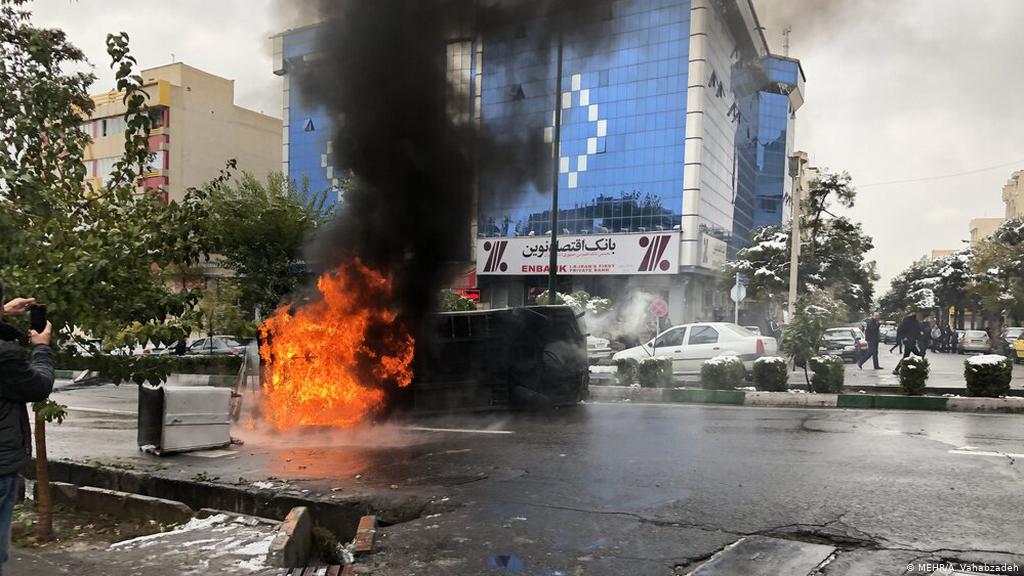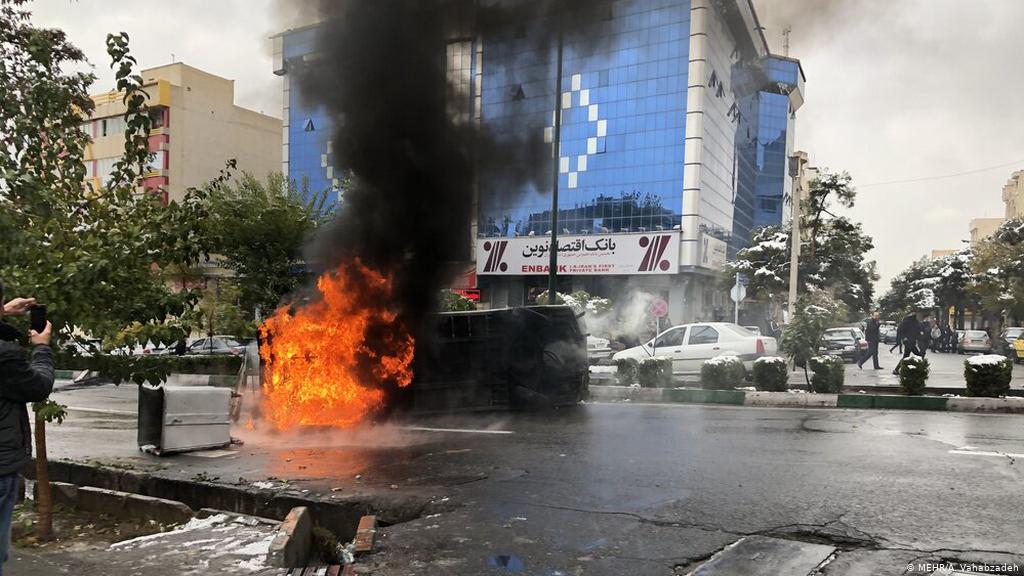When protests in Hong Kong, Iraq, and Lebanon erupted, I was fully anticipating protests in Iran to follow. In 2018 alone, the National Endowment for Democracy (NED) had spent millions of dollars in these countries (and elsewhere) to promote America’s agenda. However, I did not expect unrest in Iran to take place while I was visiting the country. In retrospect, I am glad that I was here to be witness to these latest events.
On Thursday, November 21st, friends took me to a very charming Iranian restaurant in the heart of the city. During our lunch, they talked about there being a price hike in gasoline. After lunch, we walked around the charming downtown area of Tehran, visited shops and exhausted climbed into a cab. We asked the cab driver if he had heard anything about prices going up. He told us that this was just a rumor. As such, the increase in the price of gasoline took Iranians by surprise. Regrettably, the government of President Rohani had not explained the rationale behind the price increase PRIOR to the increase itself. In several parts of Iran, protests erupted. Perhaps justified; and they were peaceful. One could argue they were disruptive in that cars blocked roads making it difficult for others, causing traffic jams, but there was no vandalism on the first day – not to my knowledge.
But calm soon gave way to violence. A friend who lives in the suburbs of Tehran, in Karaj, told me that on a single street in that sleepy suburb, protestors had set 4 banks on fire. Elsewhere, police stations were attacked, banks and gas stations set on fire. Businesses were set on fire and destroyed. People were sending text messages to each other giving locations of alleged protests in the hopes of gathering people in one spot or another.
This did not surprise me. I was certain that “swarming” tactic was being implemented (as I believe it was elsewhere mentioned above). First developed by RAND as a military and tactical tool, RAND’s publication “Swarming & The future of Conflict” states:
In Athena’s Camp, we speculated that swarming is already emerging as an appropriate doctrine for networked forces to wage information-age conflict. This nascent doctrine derives from the fact that robust connectivity allows for the creation of a multitude of small units of maneuver, networked in such a fashion that, although they might be widely distributed, they can still come together, at will and repeatedly, to deal resounding blows to their adversaries. This study builds on these earlier findings by inquiring at length into why and how swarming might be emerging as a preferred mode of conflict for small, dispersed, internetted units. In our view, swarming will likely be the future of conflict.”
Social conflict also features pack-like organizations, as exemplified by modern-day ‘soccer hooligans.’ They generally operate in a loosely dispersed fashion, then swarm against targets of opportunity who are ‘cut out’ from a larger group of people. The use of modern information technologies—from the Internet to cell phones—has facilitated plans and operations by such gangs (see Sullivan, 1997).
Swarming depends on robust information flow and is a necessary condition for successful swarming. In other words, by controlling communication and sending texts to “protestors,” random groups are mobilized together in one or various spots. Chaos ensues which naturally draws reaction. One is never aware of the origin of the messages. In one of her talks, Suzanne Maloney of Brookings seemed to know the exact number of cell phones in use in Iran. These messages increased in number, as did the vandalism and reaction to the destructive behavior. This was not the first time that this tactic had been used in Iran. But it was the first time that Iran’s adversaries were surprised, shocked even, to see that Iran was capable of shutting down the internet so quickly in order to put a stop to the spread of violence and restore calm.
I drove around in Tehran from end to end, either with friends or in a cab and took note of the streets. I watched both Iranian tv news and foreign media such as BBC Persian, VOA, Radio Farda, Saudi funded Iran International broadcasted into Iran through satellite (at times jammed) to encourage people to get out on the streets and to protest. Iran was covered under a blanket of snow. With freezing temperatures, I was amused to see BBC Persian show pictures of ‘demonstrators’ in T-shirts. I was angry to see Reza Pahlavi, the deposed Shah of Iran appear on Iran International encouraging people to get out onto streets. I felt insulted on behalf of every Iranian when Secretary Pompeo retweeted an old tweet and then tweeted again that ‘he was with the Iranian people’ – not to eat, not to receive medicinal goods, not to address their desire for peace and security, but to endure all kinds of hardship and to be subjected to American terrorism (sanctions) and go out on the streets to protest in order to promote America’s agenda.
The hostile foreign media even showed pictures of a “protestor” handing out flowers to security personnel – a symbol first used against the Pentagon in 1967 by a woman protesting the war in Vietnam (and later in the 2014 US backed coup in Ukraine). Except I could not tell if the picture I saw streaming through the foreign media’s satellite television was Iran or not. The viewer was told it was. The symbol was powerful, but I doubt very much that it was an indigenous one.
With the internet disconnected, foreign media propaganda then had its viewers believe people were calling from inside Iran; eyewitnesses reporting events. A voice telling BBC, or Iran International, or …… what was going on. Just a voice which would not doubt then be picked up as eyewitness testimony and shared in all media outlets. The ease with which individuals in various target countries always manage to get directly through to a television stations has always fascinated me. No automated answer – just straight to the newsroom.
In all this, I can’t help but ask why it was that none of the banks and gas stations set on fire, buildings burnt and businesses ruined, were not located in the pro-West parts of Tehran. Their life continued without a hitch – homes safe, business safe. After all, the main reason for the gasoline price increase was to help the less affluent and the poor. Perhaps as Daniel McAdams of the Ron Paul Institute said of the CIA’s role behind the uprisings, Michael D’Andrea, aka “Ayatollah Mike” wanted them safe. Regardless of the reason, CIA/NED spent millions and failed – again.
Reprinted with permission from Global Research.


